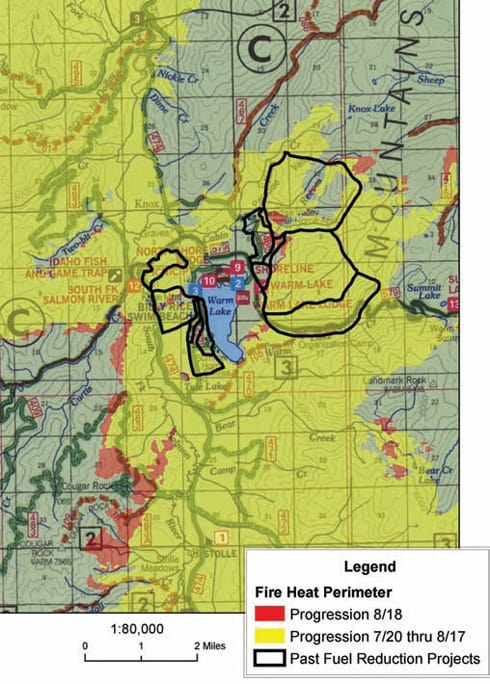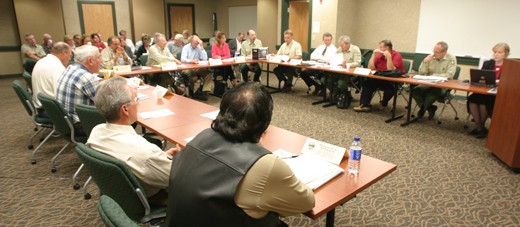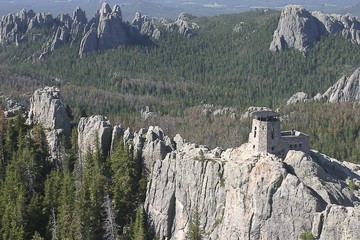Let’s deal with “sins of commission” first, since these are more easily seen. We humans are not good at dealing with surprise. It gets worse when we are surprised by our own failings as pointed out by others. The sad tale of the US Forest Service’s continuing inability to deal with failures pointed out over decades by the environmental community is testament to this failing. There are sometimes private admissions of error, but where are the organizational admissions that translate to inbuilt policy shifts and organizational behavior changes?
I will never forget a conversation I overheard one day just outside the Auditor’s Building (FS Headquarters). Associate Chief George Leonard, arguably the most powerful FS player of the day was just ahead of me, talking with a companion. As the conversation turned toward the over-cut Pacific Northwest, Leonard remarked, “We did cut the shit out of the Olympic National Forest.” There it was, a personal admission of guilt. Unfortunately, only grudgingly and without overt policy shifts, did the Forest Service change its ways. This is understandable, because as Herb Kaufman (author of The Forest Ranger) predicted, the Forest Service has become a rigid, unchangeable force: a blind bureaucracy. That brings us to “sins of omission”, what you don’t see you can’t fix.
As bad as we humans are in dealing with surprise, we are worse at dealing with our own ignorance. Among the most important things the Forest Service has missed in its ignorance, is that bureaucracy must be managed and must be led. In order for both to be effective – remembering that the two need to be jointly and thoughtfully applied for successful organizing – they must be studied and talked about regularly. They must also be practiced. How was this missed? Note: The problem is much bigger than the US Forest Service. Only in the past few years have I realized how utterly blind and mismanaged are other agencies of the US Government, including the CIA, the NSA, the Federal Reserve, the Treasury, SEC, the FTC, and so on.
Right now, supposedly, the top brass in the Forest Service is working with Bill Isaac’s Dialogos group to begin a journey to right what has heretofore been undiscussed and undiscussable, what I have elsewhere called “the management trap”. (See also this on the 2007 Dialogos report on the FS.) But little light (insight) from that effort has trickled down to the rank and file in the Forest Service. And, so far, little if anything has been done to change in internal working of the FS bureaucracy. Or maybe I’ve just not seen it from my “retirement” perch. Is anything being learned? If so, can individual learning translate into organizational learning?
Over a decade ago, I challenged the Forest Service to rethink its stance on management, leadership and learning. Here is a bit of what I offered-up:
In searching out answers, we would do well to read among the many good books written on “planning as social learning” and “planning as organizational learning,” and also among the many good books on “adaptive management.” It’s always dangerous to single out one book, but what the hell. I heartily endorse Lance Gunderson , C.S. Holling, and Stephen Light. 1995. Barriers and Bridges to the Renewal of Ecosystems and Institutions. Within even this one book there are many lessons yet to be learned about ecosystems, institutions and the boundaries that both separate and integrate them. Space doesn’t permit, but we ought not overlook the contributions of organizational learning writers like Chris Argyris, Arie De Geus, Joseph Jaworski, Donald Schon, Peter Schwartz, Peter Senge, and Karl E. Weick. Even if we could figure out a thoughtful approach to organizational learning and adaptive management, we still have to tackle the problem of working politics that Lee defines as “gyroscope” [in Compass and Gyroscope]. This is a lesson well known to Gunderson and friends, but a lesson yet to be learned by the Forest Service.
Later, I reprocessed my plea as a “process gridlock” suggestion:
Do we continue to operate our organization in an antiquated parent/child organizational framework? Do we continue to operate from a belief that running an organization always or most frequently requires use of power-over instead of power-with?
If we answer yes, as I believe we must, why not rethink our organization? We might begin with workshops or “inquiry sessions” for Line Officers, WO Directors, and Regional and Forest Staff Officers. The workshops would focus on how organizations function based on a premise of working with adults, rather than overseeing children. (See generally the literature on ‘Learning Organizations.’)
Sure we have rules and regulations dictated by law and policy that emanate from domains ‘above’ the agency in the US government that require certain things from us. Sure we have encumbrances (also opportunities) on ‘personnel management’ different from private sector organizations. And so on. But that ought not to stop us from reevaluating our organization functions in light of emerging organizational theory/practice.
As I’ve done before, I recommend that you bring in Karl Weick and Kathleen Sutcliffe, Robert Kegan and Lisa Laskow Lahey, Margaret Wheatley and/or Peter Senge. You may want to include Gifford and Elizabeth Pinchot as well. Let this group suggest recommendations on how to structure such inquiry sessions as well as on other organizational betterment ideas.
I reiterate my plea, that the Forest Service begin to reevaluate the agency’s approach to policy-making, management, and leadership. There is simply no way to effect better planning policy-making, and administration, if there is no substantial changes in extant bureaucracy. Gifford and Elizabeth Pinchot were among the early proponents of such change. See Pinchots’ The End of Bureaucracy. Unfortunately they didn’t employ the proverbial 2×4 approach. You remember. The story goes something like this:
A farmer went to the State Fair and watches a muleskinner driving some mules in
the plowing contest. He’s got one mule in the lead harness that seems really
smart, doesn’t balk, works hard, has strength and leads the other mules so the
farmer buys the mule and takes it home only to discover that the mule laid down
and couldn’t be made to work.
The farmer and his wife finally drag the mule into the back of the farm wagon,
and the farmer goes back to the Fair. The farmer finds the muleskinner and
starts yelling that he’s been cheated. That mule won’t move, let alone pull the
plow.
“Oh, I’m sorry,” says the muleskinner, “I forgot to give you the rest of the
gear.” With that the muleskinner picks up a big piece of 2×4 and bangs the mule
a good hard blow to the side of the head. The mule scrambles up and looks as if
he just can’t wait to git started.
“Yes Sir,” says the muleskinner, “This is a really good mule. You just have to
get his attention.” He hands the 2×4 to the farmer and sends him home.
The next day, the farmer walks toward the mule carrying the 2×4, but before the
farmer can lay it across the side of the mule’s head, the mule scrambles up and
gets to work and drags the other mules up, too. Best damn mule the farmer ever
had.
The problem is, who can deliver a “policy-making, management, and leadership” wake-up 2×4?
Or maybe such has been delivered via Dialogos and others. If so, when will we begin to see the effects?








